Central to these discussions are Uganda’s plans to wean herself off from being over-dependent on private foreign companies in managing the electricity sub-sector. In this case, a post-Umeme/Eskom- concession management strategy has been developed that seeks to guide the Ministry of Energy on the way forward. The CEO East Africa Magazine’s Paul Murungi sat down with Ms Irene Pauline Batebe, the Permanent Secretary at the Ministry of Energy and Mineral Development, in a wide-ranging interview that sought to explore Uganda’s electricity ambitions for the next 20 years.
20 years ago, the government leased out power concessions to Eskom and Umeme. What drove the government towards such a decision?
If you go back to that time, we were reporting access rates of 10 per cent overall for electricity, and there was a need to attract financing into the sector.
So, through these reforms, that’s why we leased out these electricity assets to the private sector to leverage their capacity to mobilise financing/capital. Over the last 20 years, we’ve seen this being achieved by mobilising over USD 2 billion (UGX 7.6 trillion) into the sector, which speaks to one of our targets.
In addition, we have increased our generation capacity over the last 20 years from about 360 megawatts, and at the end of the year, we were reporting 1,770 megawatts; when we commission the Karuma Hydro Power Project; we expect a total of 2000 megawatts on the grid.
So far, we’ve tested five units of Karuma for purposes of commissioning, and almost 500 megawatts are connected to the grid, and then we should have all 600 megawatts fully tested for purposes of deploying Karuma.
What’s your assessment of Umeme’s 20-year performance?
Umeme did what they were required to do. By the time Umeme came in, our energy losses [computed as a percentage of energy purchased but not sold] were at about 38 per cent, today we’ve brought that down to 16 per cent.
We have seen growth in access rates. So within the limitations of the agreements they entered into, they have met their obligations based on the return on investment at the time. But as a government, we have an ultimate target of ensuring universal access. So that’s why we agree Umeme has met its terms, but on the government side, we know we still have some work to do.
Going forward, we’re saying if we’re going to accelerate our access rates; firstly, this concession is for 20 years, and no one has chased Umeme or terminated their agreement. When they entered this agreement, they knew it was for 20 years, so they knew at a certain point, the concession would come to an end.
On the evaluation of the government, we have also developed the capacity to manage the distribution network. Our electricity distribution company which operates outside the Umeme footprint is in about 84 districts. All we’re saying is the national distribution company can then be the successor in terms of operating and maintaining the national grid, but also critically, the national grid assets have always been on the books of UEDCL. So Umeme invests and recovers its investment, and the assets are for UEDCL.
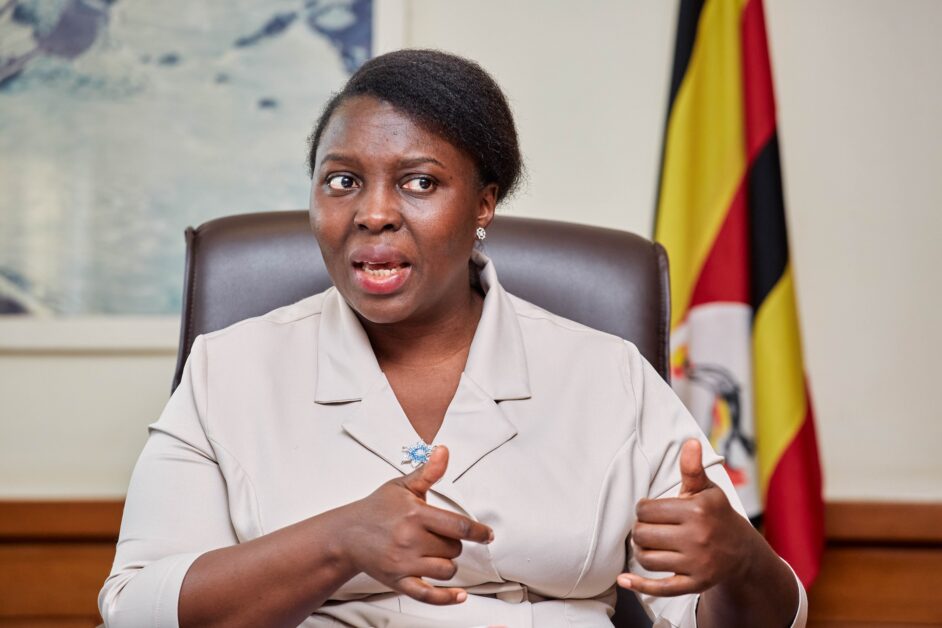
With UEDCL manning this network, we’re able to attract concessional financing which is cheaper than what Umeme was getting but we’re also aware that the government was alive to the fact that it must also have options. That’s why it gave a leeway to allow the Ministry to evaluate whether UEDCL can enter a joint venture with a private partner, with UEDCL being the majority shareholder. This would mirror what is happening with the Kenya Power and Lighting Company (KPLC). It’s a joint venture where the majority shareholder is the Kenyan government.
The other alternative is for UEDCL to run the entire distribution network themselves which would be what we see with The Tanzania Electric Supply Company Limited (TANESCO). We have worked out a road map on exactly what this transition is going to be.
There has been significant investment in the electricity sub-sector on all fronts⏤ generation, transmission and distribution. Regardless, even though the quality and reliability of electricity have greatly improved, there are still big gaps to fill. Does the government have a grip on the exact investment needed to stabilise everything?
Currently, we’re doing an asset audit for Uganda Electricity Distribution Company to evaluate the status of the asset value. That paves the way for the necessary interventions on the technical side. But on the other side, it’s the financials; how do we maintain and grow the distribution network?
We’ve done that computation and we know what UEDCL will have to invest over USD 500 million (UGX 2 trillion) in the next five years in terms of growing and maintaining the existing assets. The loads are growing, in every town centre you go to, the population is growing. We need to replace transformers, businesses are growing, so all that is an investment.
Financially, we must mobilise the buyout amount over the remaining period of Umeme’s concession. Umeme continues to invest in the network even if not as before because they’re winding up. The government will have to pay the remaining amount that they have not recovered and we’ve already instituted the auditor general to commence compliance and assessment of the buyout amount 90 days before the expiry of the concession.
We are in conversation with the Ministry of Finance on how we offset the remaining financial obligations.
How are you planning for the transition of Umeme employees to the government which forms part of the government’s post-concession management strategy? What is this strategy about, and how do you intend to implement it?
From now on, we have constituted a joint technical committee that is responsible for developing a roadmap and clear actions, and we report to a steering committee of the ministers whom we keep abreast on how we are preparing for the transition.
But also critically, we have a coordination committee where the government sits with Umeme to ensure that on an ongoing basis, we’re aware of what is happening. For instance, how do we deal with the thousands of Umeme staff? Good enough, one thing remains; the assets must be operated and maintained.
So we usually take on most of the staff, and like any transition, there might be some hiccups that we will resolve. For example, there was the salary disparity issue that we’re resolving because the staff are coming from a certain pay to another pay grade, and that needs to be aligned. That’s the nature of integration.
Equally, we expect the staff of Umeme company will be integrated into the new arrangement. There shouldn’t be any anxiety! We did the same for Namanve, when UEGCL was taking over the Namanve Thermal plant, they equally took on the majority of the staff. Besides the staff, Umeme has many shareholders. By the time you enter this kind of shareholding, you know the terms and conditions of the agreement.
We have already met with the board of Umeme, and they have already sensitised their shareholders in anticipation of the end of the concession.
There have been plans to merge the three electricity agencies. How far with this plan, and is it in line with the pending formation of the Uganda National Electricity Company?
This process is led by the Ministry of Public Service as part of the wider government reforms around the rationalisation of government agencies and expenditure.
In the Ministry of Energy, the three companies of generation, transmission and distribution were identified as some of those that will be merged. The government’s planned decision is to merge them into a single limited liability company.
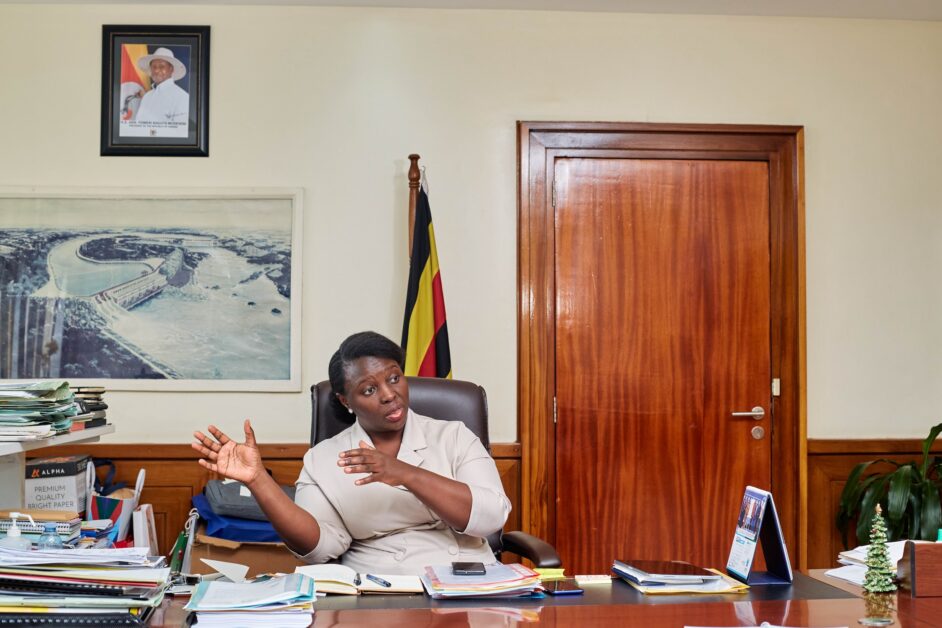
This will be an autonomous company manned under the Companies Act with a board and management. In terms of process, we are working with the Ministry of Public Service to set up the initial structures of this new company, and we should be going to Cabinet to look at these new structures and make the necessary approvals and guidance on the next course of action.
The discussion we will be having in Cabinet is securing the most suitable timing for this merger, although the Ministry of Public Service has guided that all the rationalisation is set for the next Financial Year of 2024/25. For us to ensure that this is done in a manner that ensures stability in the sector, in our proposed structures, we’re looking at distinct business operations; generation, transmission and distribution.
There have been public fears that the government taking over such critical assets might cause inefficiencies which is so common in many national companies. How are you going to balance it out?
We have ensured to have a robust regulator that sets standards for these companies in terms of performance. They have clear key performance indicators, but also as a Ministry, we monitor and supervise them. Our role is to ensure this company thrives and performs to standards. Quite often, people keep comparing it to the Uganda Electricity Board days but at that time, we didn’t even have a regulator, so there was no clear regulation, and I therefore believe 20 years later, we have a solid regulator!
Just like UEGCL which is running all our key generation assets- Karuma, Namanve, Isimba, and they have taken over Kiira- Nalubaale. At the end of the day, it is about setting clear performance standards and ensuring all are being implemented.
Vision 2040 envisions that by 2040, Uganda will require 41,738 megawatts thus increasing its electricity per capita consumption to 3,668 KiloWatt per hour. Furthermore, access to the national grid must increase to 80 per cent. Next year, we shall have 15 years left. How are we fairing? Are we on track?
We have seen growth on the national grid even on our transmission side. Today, we are boasting about 4400 kilometre-lines of transmission having grown from lower figures 15 years ago. Today, in terms of the national grid, we’re covering most of the country, and now we’re finalising plans to extend power to the West Nile. Soon, West Nile will be fully supplied and quite stable.
As we move into the next half of Vision 2040, our focus is going to be on last-mile connections; power generation is sufficient but we also plan for additional. That’s our new project by the World Bank, which is going to have the largest funding in our portfolio of USD 638 million (UGX 2.4 trillion). It’s focused on grid expansion and connectivity because our focus now is how we get to the last mile.
Where is the opportunity for Ugandan companies to partake in the electricity sector in the upcoming sector?
There’s so much opportunity in electricity today, that we’re encouraging Ugandan companies to be our contractors. We’re just concluding some bidding for rural electrification where in the bid documents we even emphasise that we want Ugandan goods and services. We want Ugandan-made cable wires, transformers, and accessories. It’s what we anticipate in the electricity sector going forward. We already have some companies manufacturing transformers, and cable wires and we have also received a number that want to manufacture metres.
To date, we are expecting to get our treated wood poles and conductors from Ugandans. Some of the switch gears are not manufactured locally, and these are areas they could invest in. These are the largest components of our electricity projects. Later on, if Ugandans can also manufacture the lattices for our transmission towers, why not?
There’s a whole industry that needs to grow in the country. Ugandans should reduce mobilising for malls. If we can get this money, and set up factories for these electricity components; it will create employment but it will also grow our national industrialisation.
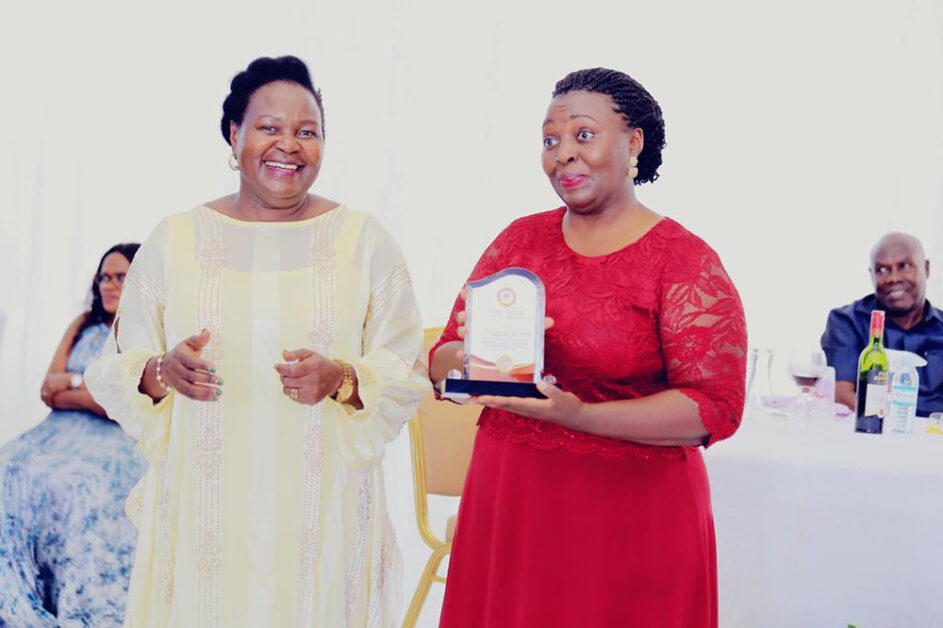
I have only talked about distribution and transmission, but on the generation side, there will be civil works and other opportunities depending on what is being done. We want to work on a local content strategy and do an industrial baseline survey for the electricity sub-sector.
But as we do that, the issue of quality remains paramount. We want to support local companies, but they must commit to delivering goods and services that are of high quality and promptly. Ugandan companies should aim to grow, and surpass the borders. The way we see Chinese companies grow is the same way Ugandan companies should grow.
With all this power on the grid, the government has been paying heavily for deemed energy which is unused power at the power dams, which speaks to a supply problem. What are the major drivers for power and how do you intend to ensure there’s adequate supply to reduce losses?
We have started with a review of our energy policy, and in September 2023, we launched a new energy policy that was approved by the cabinet.
It is the new policy that will guide us for the next 20 years, we have set a generation target of 52,000 megawatts. So the question is, how do we achieve that? Naturally, once you set a target for generation, you have directly set a target for generation, transmission, distribution and – last-mile connections because this power must get to our end users.
In our new energy policy, one of our key primary drivers will be to support industrialisation because that is currently the government’s target. You have seen a number of industrial parks being launched, and these parks need electricity. The other aspect is to endeavour to give support to in-country value addition for our mining sector. If you say, you’re going to add value to minerals in the country; you must provide the necessary power to support processing.
For example, deploying a large-scale steel industry, you need about 300 megawatts. So part of that energy policy is to drive that value addition. But away from the energy sector, we also have other targets in terms of the standard gauge railway and the mushrooming small and medium enterprises. Ugandans are very enterprising and we receive so many requests for power, and we foresee these requests growing over the years, which speaks to our target of achieving universal access – Power to every Uganda.
Today, we’re reporting access rates of about 58 per cent, but we must attain 100 per cent as part of our target. For us to achieve this dream, we must mobilise financing while well aware of other drivers such as the cost of electricity. We have to ensure we generate electricity without putting an impediment on the end user!
Now that Umeme and Eskom are exiting- How is the government going to strike a balance between funding generation and providing affordable power to the end user?
Umeme has done well, we believe much more could have been achieved but we’re also aware that some things couldn’t be achieved given tariff costs and source of financing.
Private capital is not cheap and it’s recoverable through their return on investment. Umeme was making a return on investment of about 20 per cent. Naturally, that goes into the tariff costs, but we know the tariff is contributed to by generation, transmission and distribution, and the bulk of our tariff (about 70 per cent) is driven by the cost of generation.
But for one to deal with the issue of the tariff, we must look at it from the entire value chain; we continue to push for public financing, especially for the generation of our electricity; we saw it with Karuma and Isimba hydropower plants compared to Bujagali which was purely private. We have a mix for the large hydropower projects which significantly contributes to the energy mix, and if we can fund their development through public financing, the better!
That’s why the tariffs for Karuma is able to fetch about 4.99 U.S. cents per kilowatt hour, Isimba is able to fetch 4.1 US cents per kilowatt hour, and of course, when you go to independent power producers, they’re usually a bit high, and the reason is obvious because the government is able to borrow concessional financing with lower interest rates.
The private sector goes to commercial banks and capital markets which have high interest rates. That’s the mix and match we have been trying to achieve in the value chain.
You were voted crowned the Ministry of Energy’s best performer of 2023. It is also about two and half years since you assumed the role of Permanent Secretary at the Ministry. What would you consider as your key highlights in this period?
[Laughs]….that’s so personal. Having spent almost two and half years as the permanent secretary, this role allows you to serve at the highest technical level of government. You do have an opportunity to spearhead a very critical sector of energy, mining and petroleum which are among the foundations of the nation. Having a great team has been very key in supporting the Ministry and ensuring we’re achieving our mandate. So we continue to build our team capabilities to be able to serve the public better.
My key highlight has been the fact that we’re able to solve problems and we see contented citizens, and the feedback we get when we have delivered on our mandate. That’s why now, our focus is on how we can continue improving our customer care. It’s one of our values, and we’re paying attention to that.
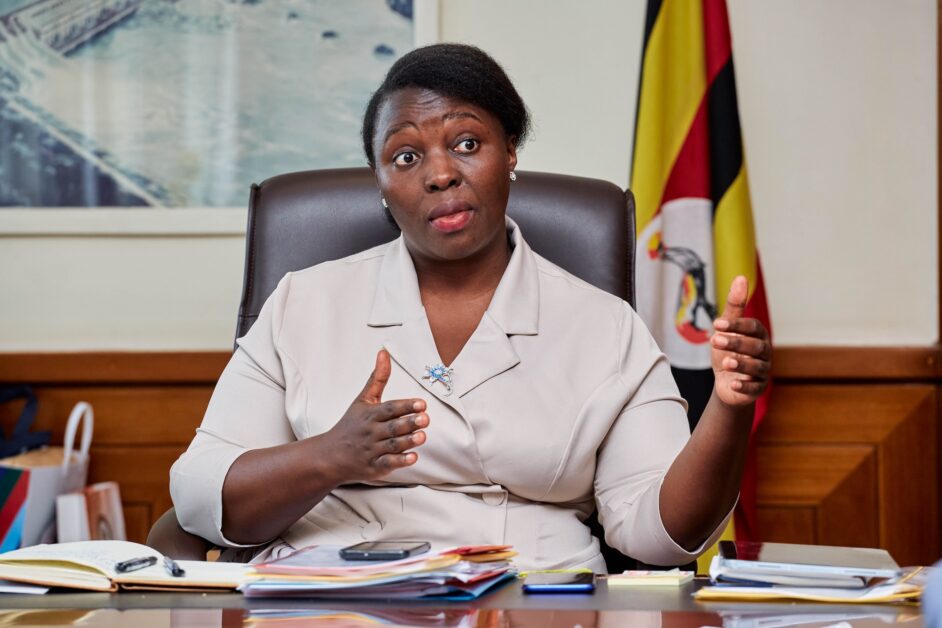
We’ve seen many achievements in the last two years; on the policy side, we saw the enactment of the new Mining and Minerals Act which is supporting us to better regulate and organise the mining sector. But on the electricity side, we passed a new law, the Electricity Amendment Act of 2022, which is also going a long way to facilitate investment in the sector. We’re now seeing a lot of interest from the private sector in the transmission where we opened up for investment so that Act was important because it was almost 20 years later.
We have also seen the petroleum project continue on course building on the previous achievements where we attained the final investment decision and since then, we have seen a lot of work.
Moving away from the electricity sub-sector, can you give us your reflection on the mining industry from the turbulent past, and paint for us a picture of where the industry is heading?
We’re dealing with a country that is enormously endowed with mineral wealth, and what is making the industry more interesting is the energy transition, and the role of critical minerals that the country holds ranging from rare earth elements, copper, cobalt, lithium, nickel, and battery minerals. Over the years the sector has continued to grow and attract a lot of interest.
The government has attracted investment and we have quite a number of licensees in the mining sector, but what was lacking, and which the government is working to fix, is the aspect of maximising benefit to the citizenry; that means value addition and aspects of national content. That’s why the new Mining and Minerals Act has focused a lot on maximising value, meaning that before that, what we were seeing was an active mineral sector with some exports being lost over unprocessed minerals. So now, our focus is on how we get more value retained in the country.
Going forward, we are trying to mirror the petroleum sector where there’s state participation. We’re in the process of putting together a national mining company and this will hold the commercial mining interests in critical mineral licenses. Our very first license where we’re going to pilot will be Kilembe mines. A lot of activity is going to identify an investor and we’re at a request for proposal stage, and we have received proposals.
Early this year, we should be able to identify the investor. This investor will enter a production-sharing agreement with the government and then together, they revamp Kilembe mines. That way, the government can get some value such as royalties to local governments, and then to any owners and ensure some fair share which was not the previous case for other minerals.
It’s almost a decade since Uganda imposed a moratorium on the export of unprocessed iron ore and a ban on all other minerals which was part of a wider policy directive from President Museveni to streamline the sector. How are we fairing on that front?
Companies have already started to set up processing facilities, the tin company- WoodCross Resources in Isingiro is already setting up a tin processing facility in Mbarara.
You can see that our investors are aligning with the government on value addition. As the government, we come in to support the artisanal and small-scale miners by setting up beneficiation centres, these are value-addition centres. We have set up one in Ntungamo, and Fort Portal.
The small-scale miners can add some value so that when they are selling to the next buyer, they earn much more. Critically, we’re pushing for mineral certification. Minerals if not well monitored, end with illicit mineral trading but they can fuel conflict. That’s why you see conflict in certain countries that I cannot name.
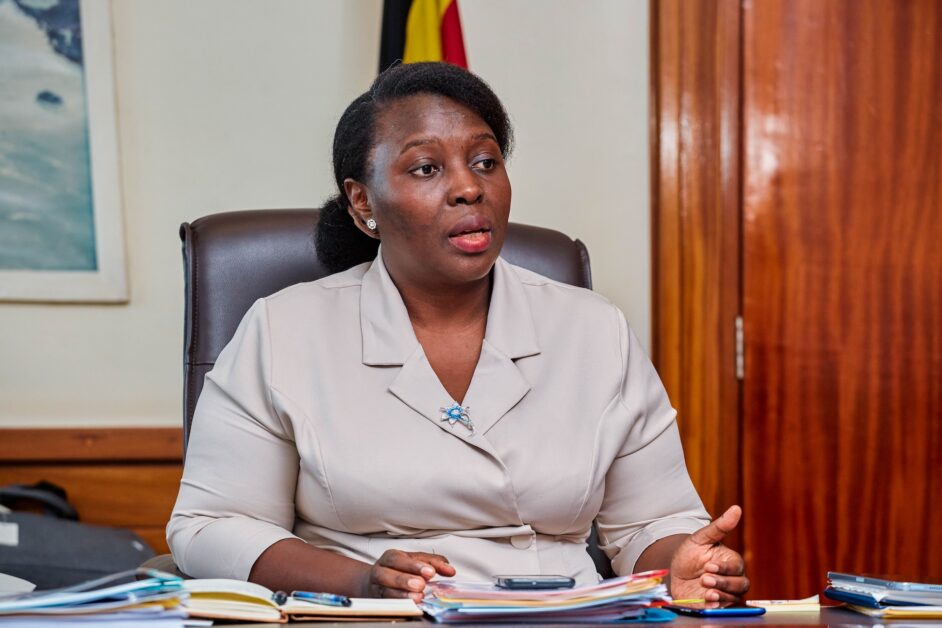
We have therefore introduced mineral certification under the International Conference on the Great Lakes Region (ICGLR) regional body, and going forward, whoever is processing for purposes of export, or transiting any minerals through the country, we’re able to track and ensure that there’s no illicit trading.
Are we going to see state participation in other major mining projects?
Under the new regime, we have an opportunity at the issuance of a mining license to introduce aspects of state participation. That’s the Makutu rare earth project and Wagagai Gold Mine. Most of them were at the exploration stage when the new law came into place, and we’re now processing their mining licenses.
How is the country going to avoid the Congo mineral curse considering that if you go to Karamoja, you find artisanal miners are not benefitting as they should from the mining of marble, and mining companies are not adhering to environmental standards?
We have avoided the Congo curse all these years. Our new law is also focusing on organising the artisanal and small-scale miners, and we’re able to know who they are and where they are. We have launched a biometric system for quite a number of them. When we come to a mining licensee, the licensee cannot hide some of this information, they must keep track of who is going into a mine, and have to report on that.
We have also launched creating awareness on health, safety and the environment. You know, I was in one of the mines in Mwerasandu- Ntungamo district, if those people are not sensitised, they do all sorts of things. We’re also training these artisanals on negotiation skills. They work so hard, but the license holders buy minerals from them at lower rates. We come in to ensure they negotiate better.
Later, we plan to set up market centres to sell their minerals, something that Tanzania is doing very well.
Come March 31st 2025, the Umeme concession to run the government of Uganda’s electricity distribution assets comes to an end. Irene Batebe, the Minerals and Energy Ministry Permanent Secretary assures Ugandans of a stable post-Umeme energy regime.
Following the smooth ending and transition of a similar electricity-generation concession with South Africa’s Eskom, Batebe reiterates that Uganda’s capacity and skills to manage her energy sector, have come of age and now is the time to wean the sector off expensive private capital to a more affordable and sustainable public capital.
 STEADFAST AND RESILIENT: Equity Bank Uganda consolidates position among top 5 banks, despite a one-time provisioning-related loss in 2023
STEADFAST AND RESILIENT: Equity Bank Uganda consolidates position among top 5 banks, despite a one-time provisioning-related loss in 2023